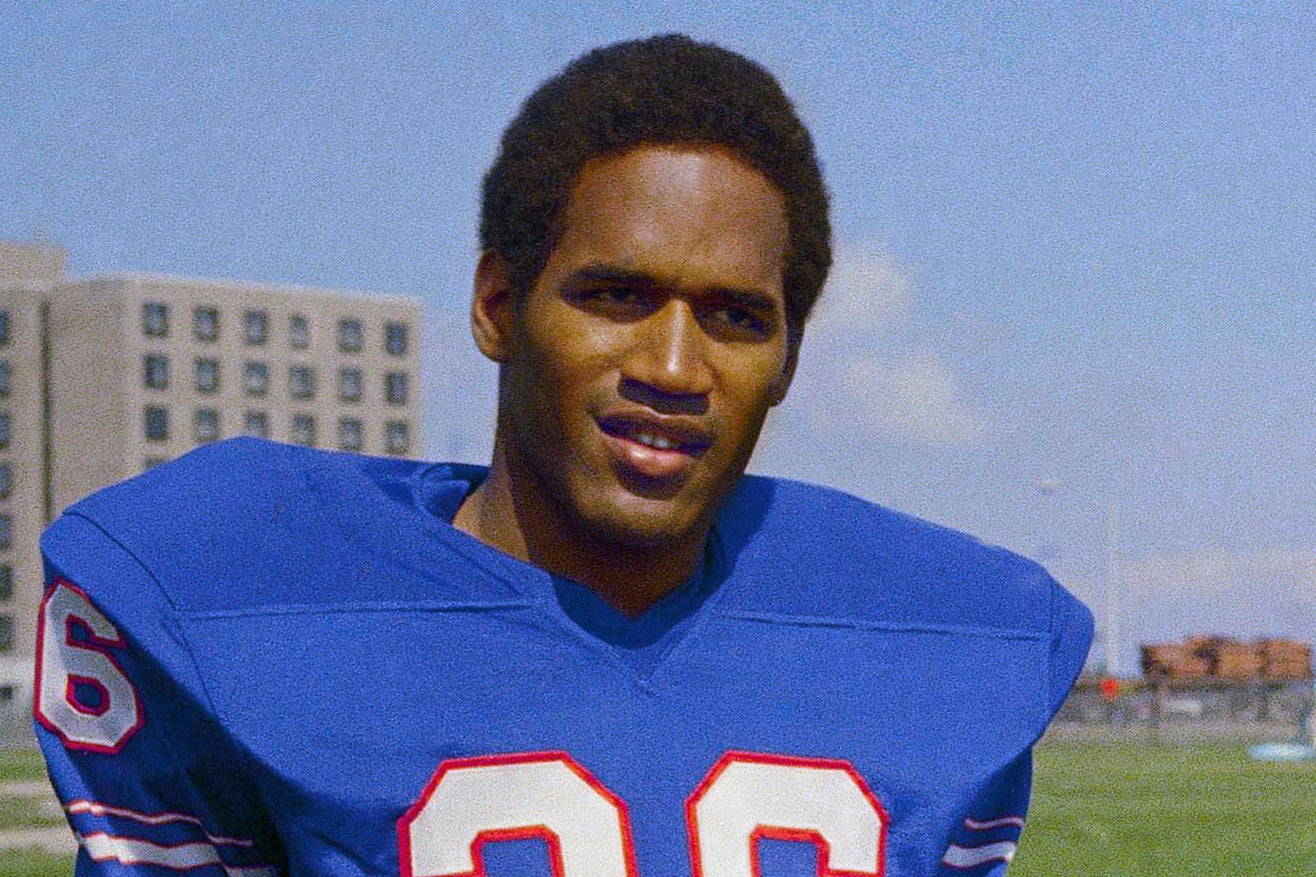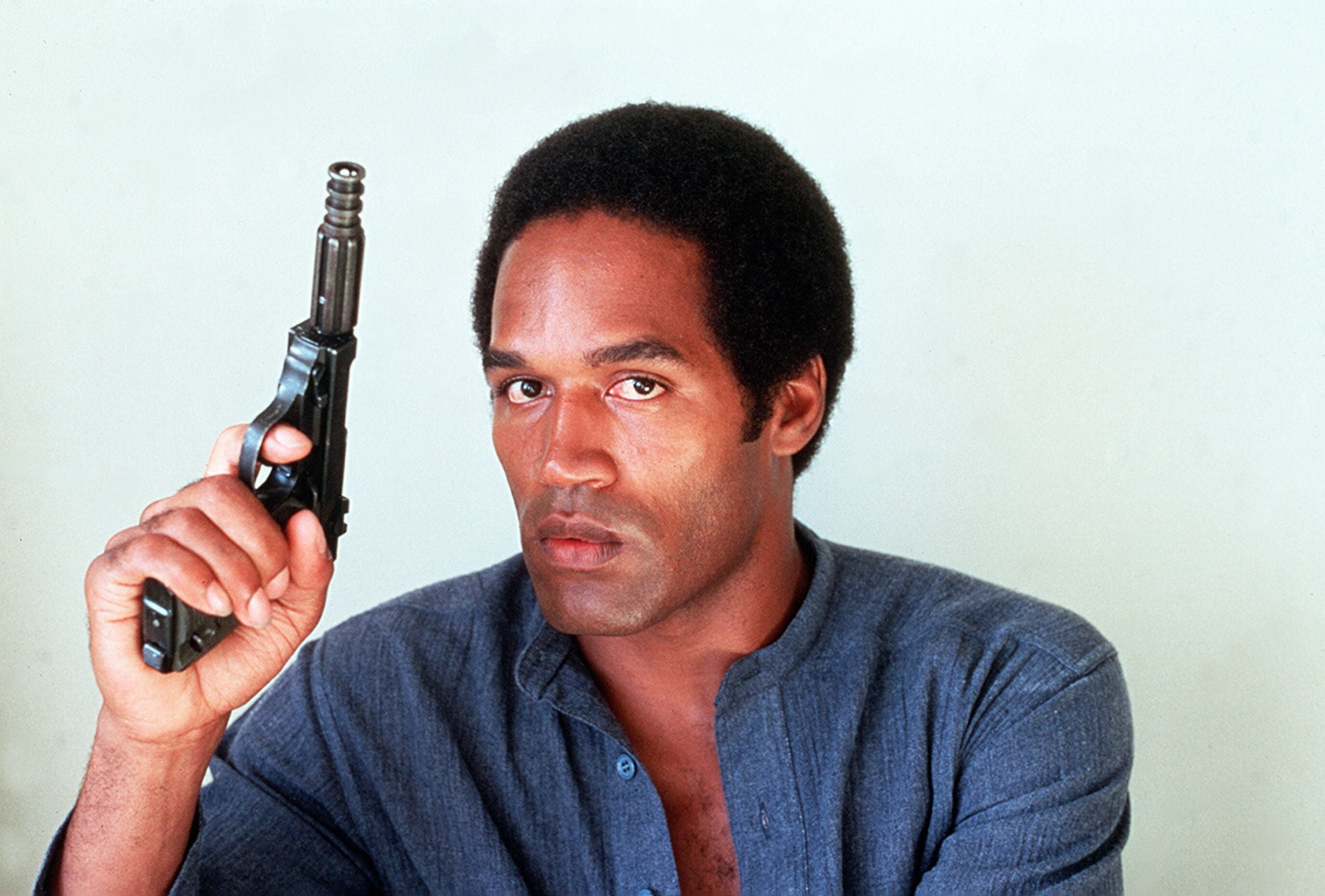Who was OJ Simpson before his wife’s infamous murder? The football star aspiring to film fame
Before being accused of the murder of his ex-wife Nicole Brown and her friend Ron Goldman, Simpson was one of the best loved celebrities in North America, dubbed ‘the first black athlete to become a bona fide lovable media superstar’

Your support helps us to tell the story
From reproductive rights to climate change to Big Tech, The Independent is on the ground when the story is developing. Whether it's investigating the financials of Elon Musk's pro-Trump PAC or producing our latest documentary, 'The A Word', which shines a light on the American women fighting for reproductive rights, we know how important it is to parse out the facts from the messaging.
At such a critical moment in US history, we need reporters on the ground. Your donation allows us to keep sending journalists to speak to both sides of the story.
The Independent is trusted by Americans across the entire political spectrum. And unlike many other quality news outlets, we choose not to lock Americans out of our reporting and analysis with paywalls. We believe quality journalism should be available to everyone, paid for by those who can afford it.
Your support makes all the difference.Before OJ Simpson was accused of murdering his ex-wife and her friend – and sensationally acquitted at the “trial of the century” in 1995 – he was already a household name in the United States.
The former athlete – who died on Wednesday aged 76 after a battle with cancer – had effectively parlayed his NFL superstar status into acting and advertising stardom.
He was known for his self-deprecating on-screen appearances, and was the face of Hertz car rentals with the slogan: “The superstar in a rent-a-car.”
In 1975, People magazine described Simpson as “the first black athlete to become a bona fide lovable media superstar”.
His career plummeted, though his fame reached new heights, when his ex-wife Nicole Brown and her friend Ron Goldman were found stabbed to death at her Los Angeles home in 1994.
Though he was sensationally acquitted of the murders in 1995, his career in the media and entertainment industries was irrecoverable.
The All-American athlete

Despite playing for the unfashionable, struggling Buffalo Bills, who made the play-offs just once during his nine seasons with the team, Simpson was not only a superstar but an unstoppable force whose name remains a legitimate part of the greatest running back of all-time conversation.
Having initially struggled to garner any interest from major colleges due to his mediocre high-school grades and multiple arrests, he enrolled at the City College of San Francisco in 1965 and was named to the Junior College All-American team as a running back before earning a transfer to the University of Southern California.
At USC, he won the coveted Heisman Trophy in 1969 – holding the record for the largest margin of victory in Heisman voting for the following 51 years – before being taken with the No 1 overall pick in the 1969 AFL-NFL draft by the Bills.

Watch Apple TV+ free for 7 days
New subscribers only. £8.99/mo. after free trial. Plan auto-renews until cancelled

Watch Apple TV+ free for 7 days
New subscribers only. £8.99/mo. after free trial. Plan auto-renews until cancelled
He struggled for the first three years of his pro career, averaging only 622 yards per season, but when Lou Saban replaced Harvey Johnson as Buffalo coach after the 1971 campaign and built his offence around Simpson, the legend of ‘Juice’ was truly born.
He led the league in rushing in 1972 before becoming the only player in NFL history to reach 2,000 yards in a 14-game season the following year, as he was named NFL MVP for his 2,003-yard, 12-touchdown effort.
He broke the 1,000-yard barrier in each of the next three seasons and although his sole play-off appearance came in a 32-14 divisional-round loss to the Pittsburgh Steelers in 1974 – where he was held to just 49 yards on 15 carries – Simpson cemented himself as a pro football icon and broke the single-game rushing record when running for 273 yards on 29 attempts against the Detroit Lions on Thanksgiving 1976.
He spent the final couple of seasons of his career with his hometown San Francisco 49ers following a trade and when he retired after the 1979 season, his 11,236 career rushing yards placed him second on the NFL’s all-time list. He also remains the only player to rush for more than 200 yards in a game on six separate occasions.
He was inducted into the Pro Football Hall of Fame in 1985, his first year of eligibility and in 2019 was named to the National Football League 100th Anniversary All-Time Team as his rushing brilliance has stood the test of time.
The actor

Simpson began acting while at USC and appeared on the NBC crime drama Dragnet in an uncredited role – ironically, given his later legal troubles, as a potential recruit to the LAPD.
Simpson continued to act throughout his NFL career, appearing in the first episode of Medical Center while negotiating his contract with the Bills.
He made his film debut in Terence Young’s 1974 crime thriller, The Klansman, and went on to star in The Towering Inferno (1974), The Cassandra Crossing (1976), and Capricorn One (1978).
He often took on negative roles to challenge people’s perceptions of him. “I’ve got to tear down that picture of OJ Simpson, the clean-cut athlete, to get believability into whatever part I happen to be playing,” he told Ad Age in 1997. He actively sought Emmy and Oscar glory after studying the careers of Lee Marvin and Richard Burton.
His most memorable role was as Nordberg in The Naked Gun comedy movie trilogy alongside Leslie Nielsen, Priscilla Presley and George Kennedy.
In 2019, Arnold Schwarzenegger revealed to The Independent that Simpson was originally cast as the deadly cyborg assassin of James Cameron’s Terminator franchise.
“Somehow [Cameron] felt that he was not as believable for a killing machine. So then they hired me. That’s really what happened,” he said.
Besides his acting career, Simpson was a commentator for Monday Night Football and The NFL on NBC.
Hertz’s ‘superstar in rent-a-car’

For almost two decades, Simpson was synonymous with Hertz rent-a-car.
He started appearing in commercials for the company beginning in 1975, and was depicted racing through airports as people shouted: “Go, OJ, Go!”
Simpson was the human embodiment of speed at the time and the obvious choice for a company that identified haste as their key selling point.
A deal was struck that paid the NFL star $175,000 for nine days of his time and “the superstar in rent-a-car” was born.
By 1977 Simpson was named Advertising Age Star Presenter of the Year, and in 1984 he was declared the most popular athlete spokesman by consumer research firm Video Storyboard Tests.
The partnership worked for Simpson too, who once estimated that the long-running campaign raised his recognition levels from 30 to 90 per cent.
When Simpson was divorced from Brown in 1992 his assets were pegged at $10m with an annual income of $1m – half of which was coming from Hertz.
So entangled with Hertz executives was Simpson that on the night Brown and Goldman were killed, he was said to be on his way to a golf outing with the firm’s top brass and their big corporate clients.
After Simpson’s arrest, Hertz issued a short statement saying it was “shocked and saddened by this development”.
“Obviously, Hertz has no plans to utilize Mr Simpson in advertising,” the company told The Washington Post in 1996, despite the fact the star was under contract until 1997.
“Ultimately its success in raising the awareness of the company in an image-oriented business made it a plus,” a former advertising executive told The Post. “I still think it was one of the more perfect matches in the advertising, even if it ended so, so very badly.”
Join our commenting forum
Join thought-provoking conversations, follow other Independent readers and see their replies
Comments